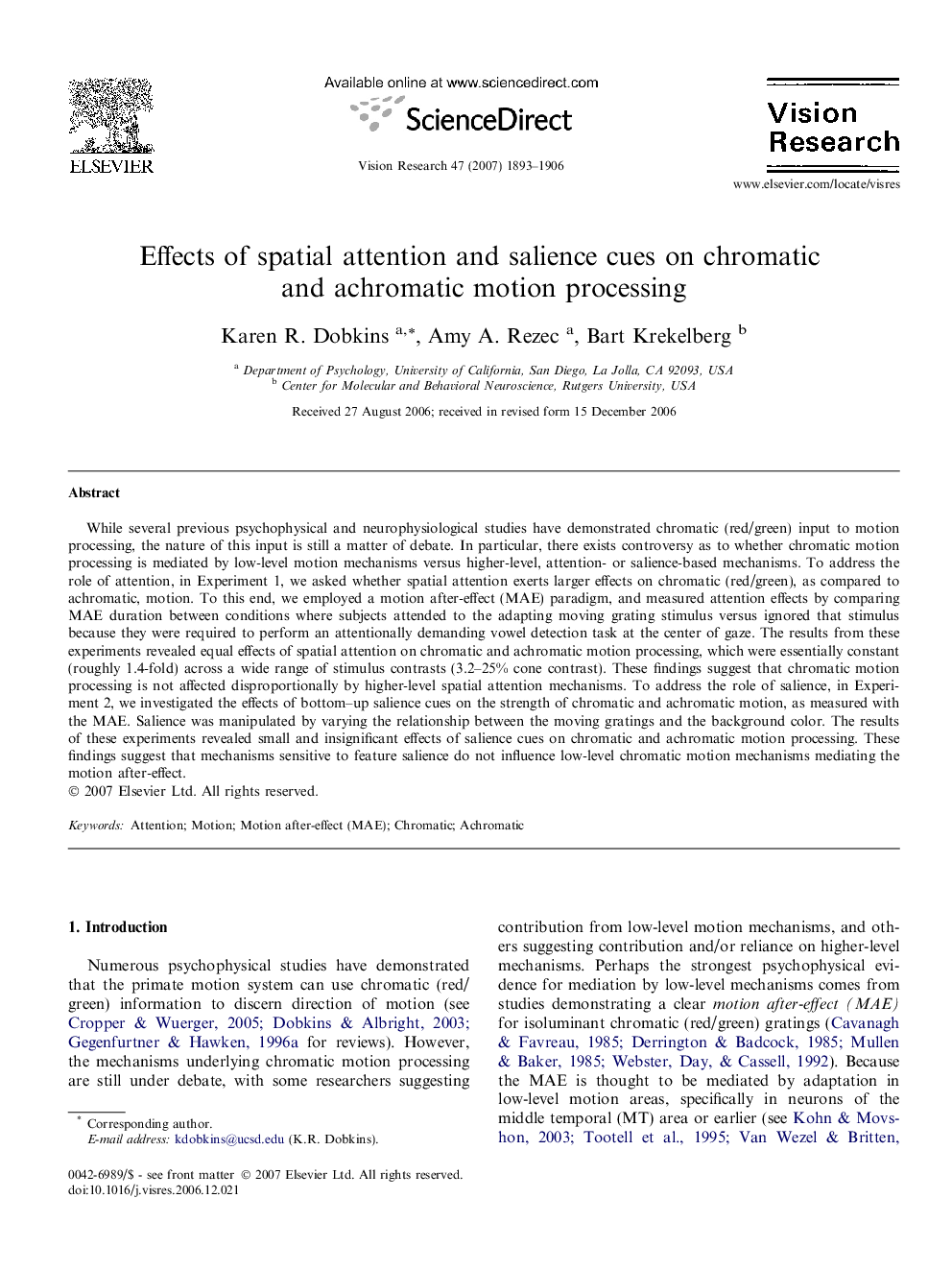| Article ID | Journal | Published Year | Pages | File Type |
|---|---|---|---|---|
| 4036187 | Vision Research | 2007 | 14 Pages |
While several previous psychophysical and neurophysiological studies have demonstrated chromatic (red/green) input to motion processing, the nature of this input is still a matter of debate. In particular, there exists controversy as to whether chromatic motion processing is mediated by low-level motion mechanisms versus higher-level, attention- or salience-based mechanisms. To address the role of attention, in Experiment 1, we asked whether spatial attention exerts larger effects on chromatic (red/green), as compared to achromatic, motion. To this end, we employed a motion after-effect (MAE) paradigm, and measured attention effects by comparing MAE duration between conditions where subjects attended to the adapting moving grating stimulus versus ignored that stimulus because they were required to perform an attentionally demanding vowel detection task at the center of gaze. The results from these experiments revealed equal effects of spatial attention on chromatic and achromatic motion processing, which were essentially constant (roughly 1.4-fold) across a wide range of stimulus contrasts (3.2–25% cone contrast). These findings suggest that chromatic motion processing is not affected disproportionally by higher-level spatial attention mechanisms. To address the role of salience, in Experiment 2, we investigated the effects of bottom–up salience cues on the strength of chromatic and achromatic motion, as measured with the MAE. Salience was manipulated by varying the relationship between the moving gratings and the background color. The results of these experiments revealed small and insignificant effects of salience cues on chromatic and achromatic motion processing. These findings suggest that mechanisms sensitive to feature salience do not influence low-level chromatic motion mechanisms mediating the motion after-effect.
